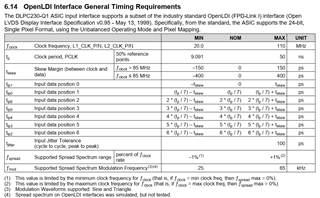Hi there:
we are using DLPC230S-Q1 for projector design. As we found in the datasheet of DLPC230S-Q1, there is an internal termination in it

but when we test the waveform, we found a wave reflection there.
Do we need any configuration to open the internal termination?
and we also found an option with the internal termination in DLPC230S-Q1's IBIS model





